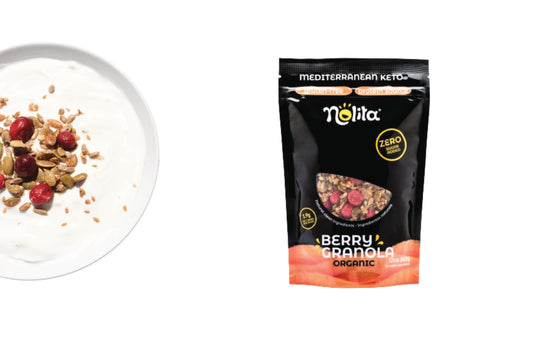Food allergies are estimated to affect between 4 to 6% of children and 1 to 3% of adults of the Portuguese population. Most people don’t know the difference between a food intolerance or an allergic reaction. This makes them think that they are allergic to a certain food when they aren’t. In reality, it is common for someone to be intolerant to certain foods, but it is rare to find people that are allergic to them.
Allergy vs. intolerance
When a person has a food allergy, their body’s immune system responds incorrectly to a substance known as an allergen.
The most common allergens are cow's milk, eggs, peanuts, nuts, some fish, seafood, and cereals (wheat and soy).
An allergen is not necessarily a harmful substance. But they trigger an immune system response that, in certain persons, can be dangerous. However, allergens do not cause an adverse effect in most people.
Food intolerances usually involve the digestive system, not the immune system. A food intolerance usually means that a person has an enzyme deficiency.
Enzymes are substances in the body that enable people to digest food. If a person has an enzyme deficiency, their body cannot digest certain foods properly. The problematic food depends on the enzyme that is lacking.
Symptoms
The symptoms of food intolerances may be similar to the allergic food reactions, but they typically take longer to appear. When a person has an allergic reaction, the symptoms appear seconds after the contact with that food. An allergic reaction involves not only not eating the particular food, but also inhaling it, touching it, or eating foods with traces of it.
Not every person will experience all of the possible symptoms of a food allergy, and each reaction may be slightly different. However, common signs and symptoms include:
-tingling in the mouth
-burning sensation in the lips and mouth
-facial swelling
-a skin rash known as hives
-wheezing
-nausea or vomiting
-diarrhea
-a runny nose
-streaming eyes
-Or, in several cases, anaphylaxis.
Common symptoms of food intolerance include:
-bloating
-excess gas
-stomach pain
-diarrhea
-migraine
-headaches
-a runny nose
-malaise
How to know if you have a food allergy?
A good way to know if you have an allergy or an intolerant reaction to a certain food is to pay attention to the signs that your body gives to you. You can also answer these questions:
-what symptoms occur
-how long it takes for the reaction to begin
-which foods cause it
-whether the food is cooked
-where you eat it
You should always check the situation with your doctor, and probably he will want to know if you have any other existing allergies, such as seasonal allergies or asthma, and your family history of allergies.
Your doctor can ask you to make some of the following tests too:
-Skin prick test: A healthcare professional places diluted foods onto the person’s arm and lightly pierces the skin. Any reaction, such as itching, swelling, or redness, indicates that the person may have an allergy.
-Blood test: This test looks for the presence of antibodies that are specific to certain food proteins and can indicate an allergy.
-Food diary: The person writes down everything they eat and describes symptoms if they occur.
-Physician-supervised blinded oral food challenge: This is the most scientific method to diagnose a food allergy accurately. A physician gives the person a suspected food allergen in increasing amounts, monitoring for symptoms under close supervision. This method removes the chance of psychological reactions.
How to prevent these reactions?
If a person has a food allergy or an intolerance, they may have to avoid the food that appears to cause it. They may also have to check the ingredients of food products carefully, whether buying for home consumption or eating out.
Check out our post about how to read a product label: 5 things to check when you buy a product.
Anyone who knows they have an allergy and may have a severe reaction should carry an injector, such as an EpiPen, that delivers epinephrine or adrenaline. They should carry two doses in case one is not sufficient.
A food intolerance will not usually need urgent treatment. The best treatment is a long-term plan to manage the problem.
Managing an intolerance usually starts with an exclusion diet. This is when a person avoids a food that may be causing the problem for some time, usually 2 to 6 weeks.
The individual may benefit from keeping a food diary to record whether their symptoms improve. After this, they reintroduce the food and note any new reactions.
People may need to repeat this monitoring with different food items to pinpoint which food is causing the problem.
Sometimes, people can reintroduce a food without any reaction occurring. It may be that they develop a tolerance or that a small amount of the food does not cause a problem any longer.
Photo: @melsvision
Bibliography:
Brazier, Y. (December 10, 2020). What is a food intolerance?. Medical News Today. Consulted19/04/2021.
Brazier, Y. (January 14, 2019). Is it a food allergy or an intolerance? Medical News Today. Consulted 19/04/2021.
Newman, T. (December 10, 2020). Food allergies: What you need to know. Medical News Today. Consulted 19/04/2021.






